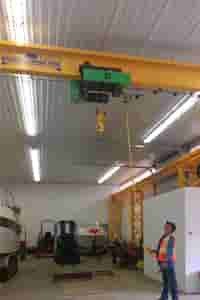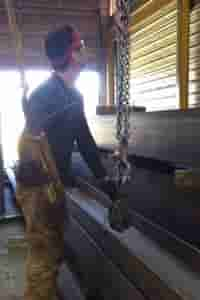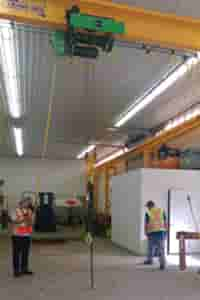What is the content of overhead crane and rigging training
As a mechanical product with certain dangers, overhead cranes must be required to pass corresponding training before the crane operator officially takes up the job. As a Chinese crane supplier, Dongqi Crane provides various types of crane products to customers around the world. We can also provide the necessary training content if the customer has demand. This article will briefly introduce the knowledge points generally involved in the training of overhead cranes and rigging.

What to do with overhead crane and rigging training
- Comprehend Overhead Crane & Rigging Fundamentals and Regulations
- Understand Safe Operating Procedures to Eliminate Potential Hazards
- Identify Crane and Rigging Components and their Functions
- Understand Equipment Specifications, Limitations, Inspection and Care
- Understand Methods for Proper Planning of a Lift
- Understand Sling Angles and How they Affect the Rated Capacity
- General Safe Use of Rigging and Hardware Components
Topics covered in overhead crane and rigging training
- General Precautions
- Types of Cranes
- WorkSafeBC Rules & Regulations
- Daily Crane Inspections
- Safety of Workers
- Safe Operations & Lifting
- Hand Signals
- Lift Types
- Spreader Bars and Lifting Devices
- Safe Work Practices and Procedures Specific to your Work Place
- Basic Rigging Hardware & Components
- Rigging Precautions

Overhead Crane and Rigging Training Needs to Know
- Rules, Regulations and Standards Governing The Safe Operations of Overhead Cranes
- Different Types of Overhead Cranes
- Crane Components and their Functions
- How to Complete and Document Pre-Shift Inspections
- Proper Lifting, Traveling and Lowering Techniques
- Operational Hazards
- ANSI Certified Hand Signals
- Lift Types; Repetitive and Critical Lift Criteria
- Under Hook Lifting Devices
- Safe Use of Magnets
- Overall Care and Maintenance of Cranes
- Slings and their Capacities
- Different Hitch Types
- Applications of Hardware
- Acceptance and Rejection Criteria
- Load Control – Center of Gravity & Stability

Lifting workers safety technical disclosure content
- Crane workers must undergo professional training, pass the examination, and obtain the “Lifting Operation Certificate” before they can engage in lifting operations.
- Before working, you should understand the task clearly and determine a reliable working method. When all the participating workers have no doubts about the tasks and methods, they can start work.
- Bind objects with sharp edges and use soft pads to avoid cutting the rope.
- When working near high-voltage lines or live objects, keep a certain safety distance from the live objects according to regulations.
- During the lifting operation, it is strictly forbidden for anyone to stay or work under the lifting piece. It is strictly forbidden for personnel to lift and lower on the hook of the crane.
- When commanding mechanical lifting equipment and workpieces, the safety and technical requirements of the crane driver shall be respected, and no decision shall be made alone without the consent of the crane driver.
- When instructing the lifting machinery to work, the hook should be on the center of gravity of the heavy object, and it is strictly forbidden to drag the heavy object in the inclined state.
- When the lifted heavy object is moved horizontally, the heavy object should be 0.5 meters higher than the highest obstacle.
- Lifting large or irregular heavy objects should be tied to a traction rope to prevent the parts from shaking and rotating.
- For immeasurable heavy objects buried in the ground, mechanical lifting is prohibited.
- Without approval, it is not allowed to modify or replace the various parts of the generator.
- When the lifting heavy object is 10 cm above the ground, stop the machine to check the rope buckle, spreader and crane


